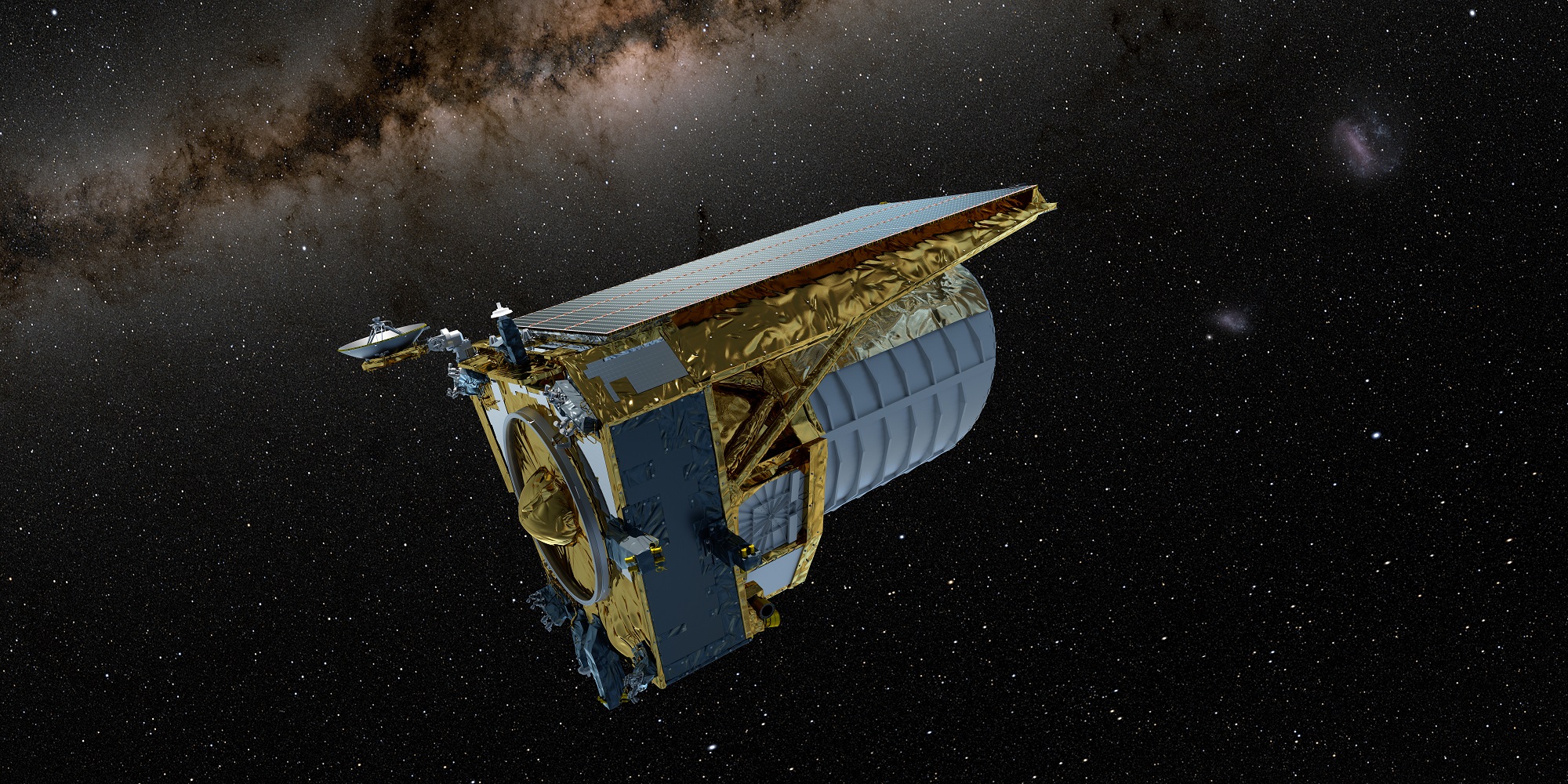On Saturday, July 1st (Canada Day!), the ESA’s Euclid space telescope lifted off from Cape Canaveral in Florida. This next-generation astrophysics mission will spend the next few weeks flying to the Earth-Sun L2 Lagrange Point, where it will spend the next six years observing one-third of the sky. During that time, Euclid will observe billions of galaxies to a distance of 10 billion light-years, leading to the most extensive 3D map of the Universe ever created. This map will help astronomers and cosmologists resolve the lingering mystery of Dark Matter and Dark Energy (DM & DE).
The mission launched at 11:12 AM EST (08:12 AM PST) atop a SpaceX Falcon 9 rocket, with the second stage separating about 2 minutes and 45 seconds later. At about 3 minutes and 37 seconds, the payload fairings detached. By forty-five minutes into the launch, ground controllers received confirmation that Euclid had separated from the second stage and made it to Low Earth Orbit (LEO). For the next two weeks, Euclid will deploy its sunshield and reach operating temperature before departing for L2 on July 29th (four weeks after launching).

Using its 600-megapixel camera, near-infrared spectrometer, and photometer (that measures the redshift of galaxies), Euclid will chart how the Universe has expanded over the past 10 billion years (~3 billion years since the Big Bang) to the present. This coincides with the beginning of the “Dark Energy–dominated era,” when the Universe began expanding at a gradually-accelerating rate. By mapping the large-scale cosmic structure of the Universe and how it has changed since then, Euclid will reveal more about the role of gravity, Dark Matter, and Dark Energy have played across space and time.
Understanding the interplay of these forces is vital to resolving the current “Crisis in Cosmology.” This includes the rotational curves of galaxies and how it doesn’t conform to the amount of visible (“luminous”) matter they contain. Scientists noticed this during the 1960s, which gave rise to the theory that 85% of a galaxy’s mass was made up of a mysterious, invisible matter (hence the term “dark”). Speculation about the existence of Dark Energy began in the 1990s, largely thanks to Hubble and its Deep Fields campaigns.
As scientists peered farther out into the cosmos (and hence, back in time), they noticed that cosmic expansion has been speeding up for the past four billion years. Combined with the unresolved mystery of Dark Matter, this suggested that either our theories regarding gravity (as described by General Relativity) are wrong or that an unknown force is responsible for counteracting gravity on the largest of scales. Based on the most widely-accepted cosmological model – the Lambda Cold Dark Matter (LCDM) model – cosmologists estimate that Dark Energy accounts for roughly 72% of the mass-energy density of the Universe.
By measuring the influence of Dark Matter and Dark Energy, Euclid will help put to rest the ongoing debate regarding prevailing cosmological theories. Once Euclid reaches L2, where it will join the James Webb Space Telescope (JWST), the mission controllers will begin verifying all functions on the spacecraft, test the telescope, and finally turn the instruments on. This will be followed by a two-month phase where they will test and calibrate each of Euclid’s scientific instruments and prepare for the telescope’s first observations. Three months after launch, the mission controllers will commence with the early phase of Euclid’s cosmic survey.
By 2027, it will be joined by the Nancy Grace Roman Space Telescope (RST), which will assist in the hunt for Dark Energy by providing more detailed analyses of objects mapped by Euclid. Check out the recap of the launch below, courtesy of the ESA:
Further Reading: ESA


It’s possible that Euclid will use to be launched US Roman space telescope for improved distance information as well, but I think I read that it is to be completed US Rubin ground telescope that will do the heavy work there. Together with the also launching Chinese Xuntian space telescope those four will study dark energy and dark matter, so hopefully we will have much better cosmology knowledge in a decade or so.
On the “crisis”, note that AFAIK it is a media characterization. What cosmologist describe it as, in their papers and own articles, is a tension in the measurements of the Hubble constant.
Which tension, arguably of course, according to the latest Dark Energy Survey data release 3 does not threaten LCDM. Its observation of LCDM “equation of state”, which includes dark energy and dark matter, is robustly observed to be the LCDM expected value. The Hubble constant measurement tension may simplest be systematic biases of the methods, and currently the data agree with that rather than new physics (but of course the question isn’t settled yet).
The article seems to say that the observed dark energy and dark matter is somehow in doubt. But that is not the consensus here AFAIK. To add to the DES3 observations, LCDM started out as the first self consistent cosmological model, and it was also the first that got universe vs star ages correct. And it has only gone on to increase significance on its observations. (Including the only tension that has reached significance, the Hubble constant measurements, which tension by now does not seem to reject the underlying theory.)